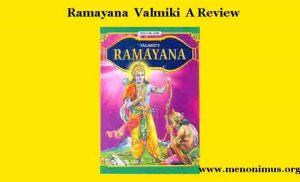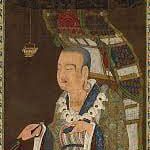Ramayana | Valmiki | A Review
Ramayana Valmiki A Review
Ramayana by Valmiki-A Review
Introduction:
The ‘Ramayana’ is a revered Sanskrit epic that holds a preeminent position in Hindu mythology and literature. Composed by the ancient sage Valmiki, this epic narrates the enthralling story of Lord Rama’s journey, encapsulating his righteousness, devotion, and valor. Spanning seven ‘kandas’ or books, the ‘Ramayana’ has traversed time and cultural boundaries, continuing to captivate readers with its moral lessons and universal themes.
Plot and Structure:
The ‘Ramayana’ follows a meticulously structured narrative that combines myth, history, and spirituality. The plot revolves around the life and adventures of Lord Rama, the seventh incarnation of Lord Vishnu. The epic begins with Rama’s birth, his early life in Ayodhya, his exile to the forest along with his wife Sita and brother Lakshmana, and his subsequent encounters with various characters, including the demon king Ravana. The story culminates in Rama’s epic battle to rescue Sita from Ravana’s clutches and his eventual return to Ayodhya as a victorious king.
Characterization:
One of the most remarkable aspects of the ‘Ramayana’ is its vivid and multifaceted characters. Rama exemplifies righteousness, selflessness, and devotion to duty. Sita embodies purity, strength, and fidelity. Lakshmana personifies unwavering loyalty and dedication. Ravana, the antagonist, is a complex character, showcasing the dichotomy of his immense knowledge and power combined with his arrogance and desire. The characters are imbued with human emotions, which make them relatable and endearing to readers across generations.
Themes and Morals:
The ‘Ramayana’ delves into numerous themes that continue to resonate with humanity. It explores the concept of dharma (righteousness), duty, and sacrifice. Rama’s adherence to dharma, even in the face of adversity, sets an example of virtuous conduct. The epic emphasizes the importance of family, friendship, and loyalty through the bond between Rama, Lakshmana, and Sita. Moreover, it delves into the complexities of good versus evil, highlighting the consequences of arrogance, deceit, and ego.
Spiritual and Philosophical Significance:
Beyond its captivating storyline, the ‘Ramayana’ holds profound spiritual and philosophical implications. It serves as a guide for righteous living, illustrating the paths of devotion (bhakti), knowledge (jnana), and disciplined action (karma). The character of Hanuman, the devoted monkey deity, symbolizes unwavering faith and service. The epic also provides insights into the concept of ‘dharma’ and the balance between individual desires and societal responsibilities.
Cultural Impact:
The ‘Ramayana’ has transcended time and space, shaping the cultural fabric of India and several Southeast Asian countries. Its influence can be seen in various art forms, literature, theater, dance, and festivals. The story has been adapted into countless languages and regional variations, further embedding its significance in diverse cultures.
Conclusion:
The ‘Ramayana’ stands as an enduring testament to the power of storytelling and its ability to convey profound ethical, moral, and spiritual lessons. Its characters, themes, and insights continue to inspire and guide people on their own journeys of self-discovery and righteous living. As a masterpiece of ancient literature, the ‘Ramayana’ remains an invaluable treasure that enriches the human experience and connects generations through its universal appeal. 0 0 0.
Ramayana Valmiki A Review
You May Like: The Satanic Verses by Salman Rushdie-A Review
N. B. The article originally belongs to the book ‘The Reviews of Epic Literature Around the World Vol-I‘ by Menonim Menonimus.








